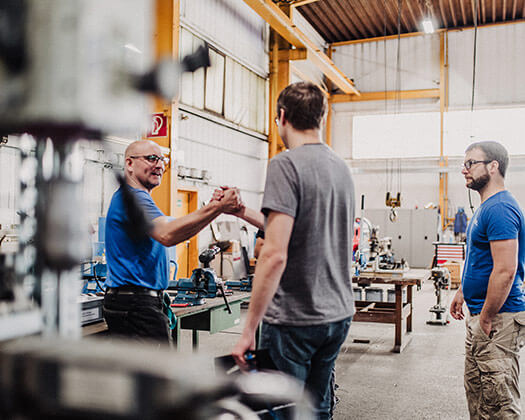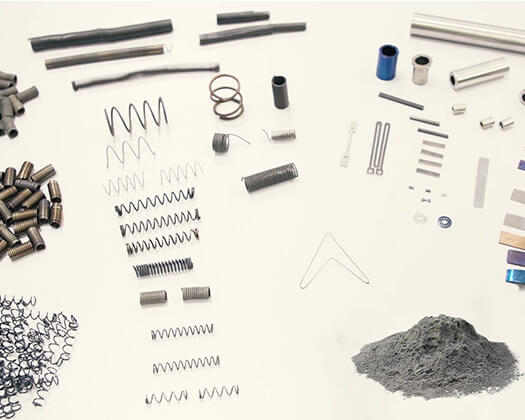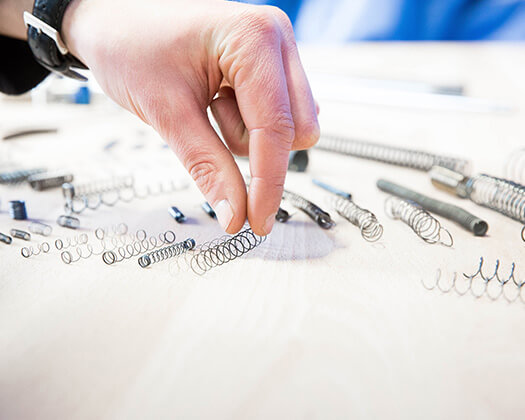What is the extrinsic two-way effect?
Effect paths and achievable stresses are lower for the intrinsic two-way effect than for the extrinsic two-way effect. In addition, an intrinsic two-way effect cannot be set for every microstructure and for many actuator geometries only at great expense. Therefore, the extrinsic two-way effect is usually used for cyclic applications.
Mode of action of the extrinsic two-way effect
In the extrinsic two-way effect, an SMA component takes on a specific shape as a result of temperature change in both the cold and the hot state. The prerequisite for this is an external mechanical stress. To apply these mechanical stresses, system pressures or weight forces can be used, for example. In many applications, conventional steel springs are used because of their good system connectivity.
When designing these external mechanical stresses, it must be considered that on the one hand they are high enough to reset the SMA components in the cold state (untwinning). On the other hand, the SMA actuator must still be able to apply the voltage or force required for the system to function despite the applied voltage. In detail, the voltage dependence of the switching temperatures and the effect on the service life must also be taken into account here.
Can you see the transformation of martensite into austenite?
The transformation of martensite into austenite takes place at the microstructural level. This makes the change invisible to the eye in most cases. These transformation processes at the microstructural level cause the SMA material to deform back to its original state. When the material cools down again, the initial shape remains.
How often can the process of the extrinsic two-way effect be performed?
Theoretically, this process can be repeated millions of times. Provided the process is performed under ideal conditions, no fatigue of the shape memory material is visible even with multiple repetitions. Nevertheless, fatigue always takes place to some extent, but operation can be reliably guaranteed by proper component design and optimal integration into a system. The number of possible repetitions also depends on the material composition, the microstructure, the type of actuation as well as the mechanical load in the system.






